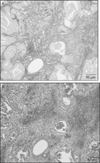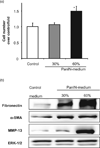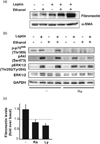Epidemiology, risk factors, and the promotion of pancreatic cancer: role of the stellate cell
- PMID: 22320930
- PMCID: PMC3736749
- DOI: 10.1111/j.1440-1746.2011.07013.x
Epidemiology, risk factors, and the promotion of pancreatic cancer: role of the stellate cell
Erratum in
- J Gastroenterol Hepatol. 2012 May;27(5):990. Edderkoui, Mouad [corrected to Edderkaoui, Mouad]
Abstract
There are approximately 277,000 new cases of pancreatic cancer and 266,000 deaths from pancreatic cancer annually, indicating a mortality rate of 96% of the cases diagnosed. Because of the ineffectiveness of therapies, a major emphasis needs to be placed on prevention. This paper reviews the epidemiology and risk factors for pancreatic cancer, and uses this information to propose plausible research directions for determining the biological mechanisms mediating the effects of risk factors on the promotion of pancreatic cancer, with a focus on the pancreatic stellate cell.
© 2012 Journal of Gastroenterology and Hepatology Foundation and Blackwell Publishing Asia Pty Ltd.
Figures







References
-
- Ferlay J, Shin HR, Bray F, Forman D, Mathers C, Parkin DM. Estimates of worldwide burden of cancer in 2008: GLOBOCAN 2008. Int. J. Cancer. 2010;127:2893–2917. - PubMed
-
- Maisonneuve P, Lowenfels AB. Epidemiology of pancreatic cancer: an update. Dig. Dis. 2010;28:645–656. - PubMed
-
- Mohr SB, Garland CF, Gorham ED, Grant WB, Garland FC. Ultraviolet B irradiance and vitamin D status are inversely associated with incidence rates of pancreatic cancer worldwide. Pancreas. 2010;39:669–674. - PubMed
-
- Raimondi S, Maisonneuve P, Lohr JM, Lowenfels AB. Early onset pancreatic cancer: evidence of a major role for smoking and genetic factors. Cancer Epidemiol. Biomarkers Prev. 2007;16:1894–1897. - PubMed
Publication types
MeSH terms
Grants and funding
LinkOut - more resources
Full Text Sources
Medical

